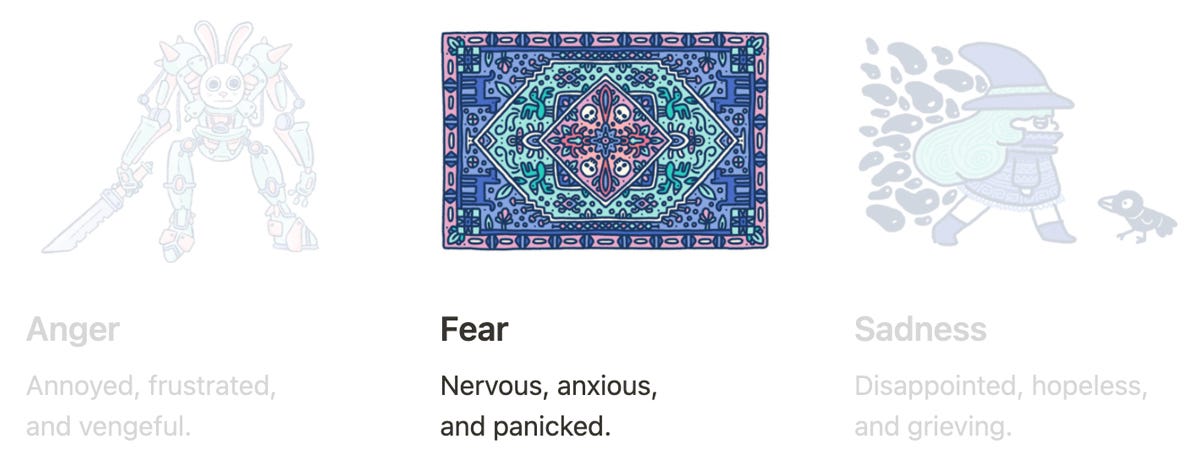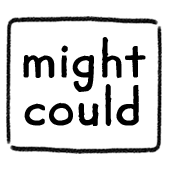NOTE: This is Part 3 of a 5-part series. Read more with Part 1 (intro), Part 2 (anger), Part 3 (fear), Part 4 (sadness), or Part 5 (hope).

We’re continuing on this week, exploring how I use drawing to experience and process the emotions of Anger, Fear, and Sadness. And today, we’re marching on into Fear!

Fear: How We Feel It
The psychologist Paul Ekman defines fear this way:
“Fear arises with the threat of harm, either physical, emotional, or psychological, real or imagined.”
Like anger, many people believe fear is not a big part of their emotional life. When you think “fear,” you might imagine situations like a huge bear growling at you or someone breaking into your home. But fear, like all emotions, pops up in a range of intensities and states. Perhaps terror and horror don’t resonate with you right now, but I’m willing to bet you feel nervous or anxious pretty often.
And as artists, we have our own specific fears: fear of the blank page, fear of imperfection, and imposter syndrome. At any given moment, we are all probably a little anxious about something.

Anxiety
How intensely we feel fear is determined by whether we believe we’re able to cope with the threat or not. The more helpless we feel, the more fearful we feel.
And this is where anxiety comes in. Perhaps the threat that led to our fear is not actually life-threatening (thankfully, most instances are not). Maybe we’re anxious about our job and the unfinished art project on our desk and the ever-expanding to-do list and all the things we know we’re supposed to do today but don’t have time to do… and, and, and. It’s that piling up and the uncertainty that we will be able to handle it that leads to anxiety.
Similar to our belief of whether we can cope with something, our level of tolerance also determines how we experience fear and anxiety. But whether we feel it often or not, intensely or not, we tend to respond to anxiety in one of two ways: worrying or avoiding.

I’m An Avoider
I’ve written previously about how I’m a bona fide scaredy-cat. But I’m not generally a worrier. For me, my coping mechanism for anxiety is not worrying—it’s avoiding. If I’m scared of something, my instinct is to go in the opposite direction.
But if I said no to everything I was scared of—everything that wasn’t perfectly prepared for, planned for, and known—then I wouldn’t ever do anything. Because the truth is, I’m afraid of everything. Everything is scary! And all that fear has now increased ten-fold since having a child because a two-year-old doesn’t understand that cars, electrical sockets, whole grapes, and hot dogs are all very dangerous!
I think most of us don’t like admitting that fear is a part of our lives or that we are sometimes afraid. It makes us feel weak and vulnerable. Being called a “scaredy-cat” is not a compliment. But everyone feels afraid, nervous, and anxious from time to time. And although our instinctual reaction to a threat may be to worry in circles or run away, we do have the ability to pause and choose how we want to respond to our fear.
If we can allow ourselves to recognize when we feel fear, experience it, and accept it, then we can consciously choose how we want to react. We can listen to what our fear is trying to say and either take its wise advice to avoid something dangerous or choose to push through the fear and open ourselves up to uncertainty and risk. Both are correct responses in different situations, and the only way to know which response is right is to listen to the fear and understand what we are afraid of and why.
And so, that’s where drawing our fear comes in.

